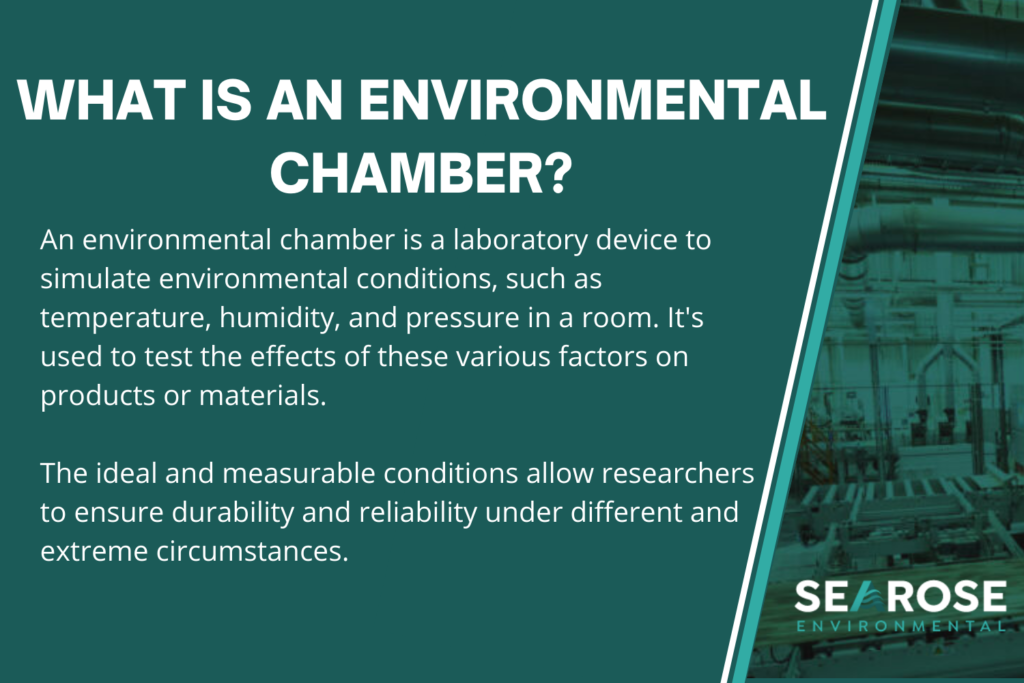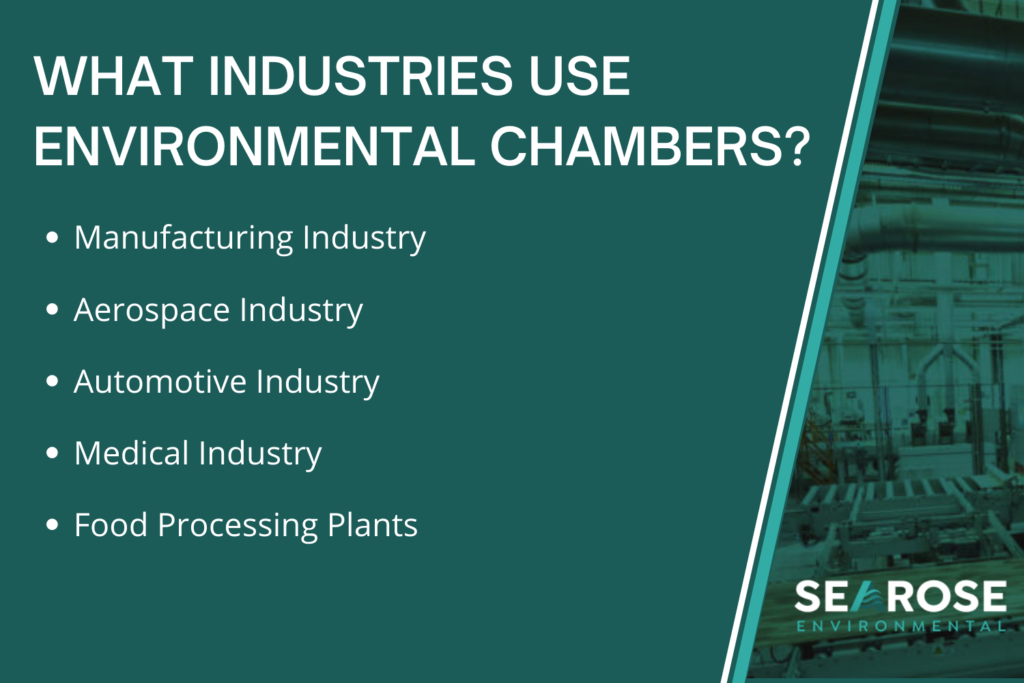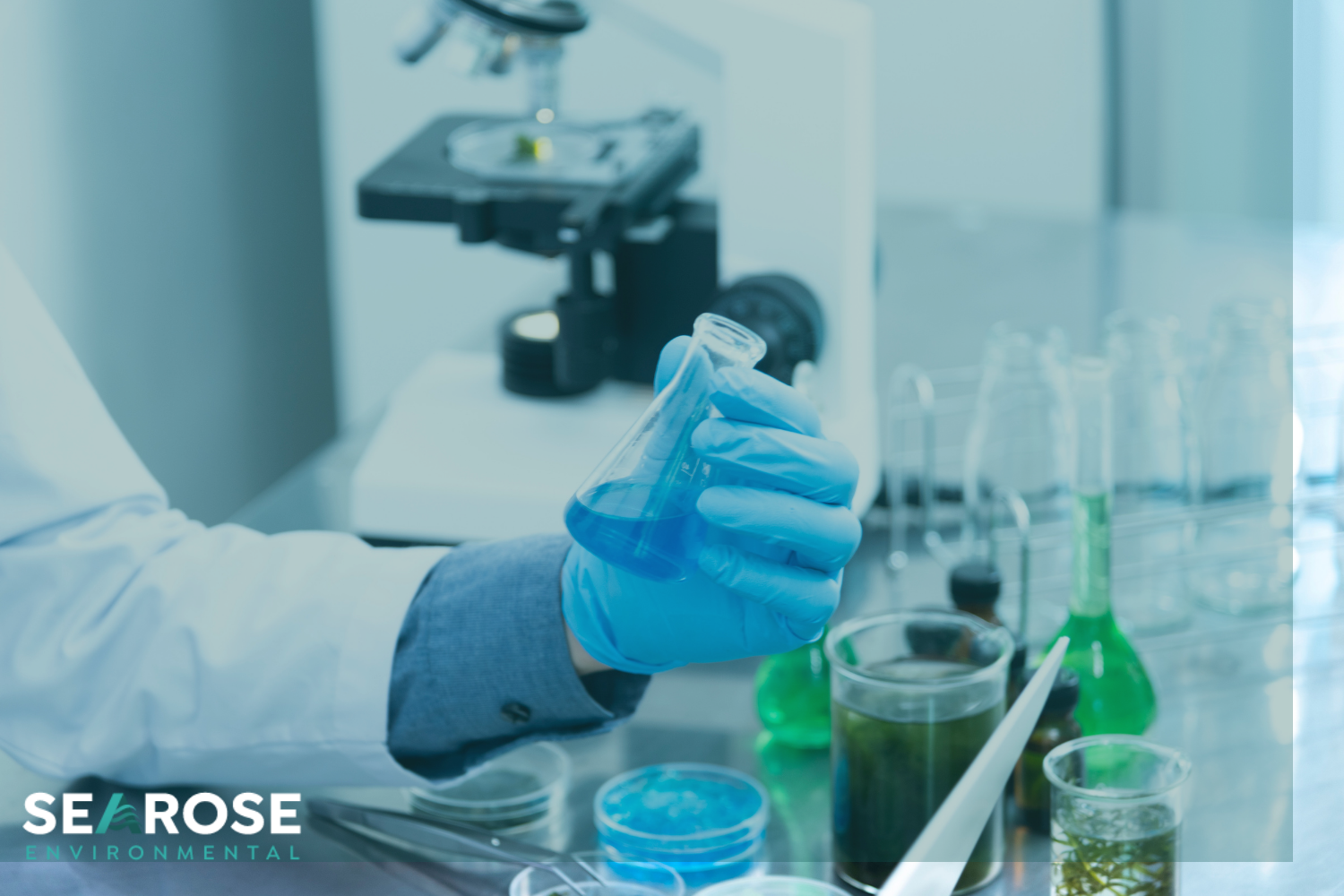An environmental chamber is a testing device that controls temperature and humidity in an enclosed, controlled space. Many industries rely on environmental chambers to ensure stable conditions for testing and production, such as aging tests, product quality tests, or research under extreme conditions.
In this blog article, Searose Environmental are here to give you a complete rundown on what an environmental chamber is, the different types of these chambers, and how an environmental chamber functions. Read on to learn everything you need to know about environmental testing chambers and their capabilities.
Let’s start with the basics:
What is an environmental chamber?
An environmental chamber is a laboratory device to simulate specific environmental conditions, such as temperature, humidity, and pressure, into a dedicated space or room. These environmental conditions and the space are used to test the effects of these various factors on products, materials, or microorganisms.
The ideal and measurable conditions allow researchers to ensure durability and reliability under different and extreme circumstances. Additionally, temperature and humidity testing chambers are used to store product materials in a controlled environment for an extended time. This provides the perfect opportunity to simulate field testing environments and evaluate a product’s performance before its release.
As an environmental chamber is equipped with sensitive sensors, gages, and monitoring equipment, environmental factors like pressure and humidity are controlled with precision, ensuring the desired parameters are stable and maintained throughout testing, production, or research.
Environmental chambers vary in size and complexity depending on the application and industry used in. While smaller bench chambers are for testing smaller products, walk-in, expansive chambers are for larger-scale testing or storage in pharmaceuticals.
Environmental chambers offer different functions and applications depending on what the space is required for. Here are some examples of real-world environmental chambers:
- A high-low-temperature test chamber is ideal for high and low-temperature reliability and durability testing. Researchers may test materials such as electric and electronic components of cars, PCs, or machinery parts for overall performance in these simulated climate conditions.
- A constant temperature humidity testing chamber is the ideal laboratory setting where factors like humidity, air pressure, and temperature need to be consistent for an extended period. They may be used for applications like testing the hot and cold resistance of plastic products, instruments, or food products.
- A salt spray corrosion test chamber offers ideal conditions where a product’s corrosion resistance needs to be tested, such as maritime components or building materials. Keeping the temperature stable keeps the concentration of added saltwater mist in the air at a consistent and constant level.
- A thermal shock test chamber usually tests the performance of a product by using two extreme environments. By shifting between these two conditions quickly, the resistance of products can be tested. For example, thermal shock test environmental chambers may test the expansion of the product caused by temperature.

What industries use environmental chambers?
Many industries rely on environmental chambers for a stable, secure, and accurate testing environment. Here are five real-world examples of where environmental chambers are used:
Manufacturing Industry
The manufacturing industry uses environmental chambers to test their products’ performance under different humidity and temperature levels. The results help to ensure the product/materials remain stable in extreme conditions and have the durability to withstand a wide range of conditions.
Aerospace Industry
The aerospace industry relies on environmental chambers for testing the performance of aircraft and their components in simulated high-altitude settings. This ensures quality control and safety.
Automotive Industry
The automotive industry uses environmental effects to test the influence of pressure, humidity, and temperature on vehicle components. Therefore, the parts are tested for strength and durability, ensuring their safety for use in the real-world.
Medical Industry
To test the efficacy of new medicines and treatments, the medical and pharmaceutical industry uses environmental chambers as part of their research routine. Simulating the long-term effects on human health helps to ensure product safety and effectiveness before market entry.
Food Processing Plants
Food processing plants use temperature and humidity testing chambers for product research. Controlled temperatures, humidity and pressure help to ensure product safety and preserve shelf life for food-based products.

How does an environmental chamber work?
The most common type of environmental test chamber is a walk-in chamber. It usually consists of four walls constructed from an insulating material, sheet metal, and fibreglass. To protect the temperature and humidity testing chamber from corrosion, it is often lined with stainless steel as well.
The test chamber’s humidity levels are regulated by industrial dehumidification systems. As an environmental chamber is almost always used to simulate specific temperatures, they also rely on electric heaters and refrigeration units. Therefore, the chamber will have different components to control cooling, heating, pressure, and moisture.
As environmental chambers are required to provide specific conditions, the accuracy of each chamber and its function is absolutely vital. Chambers will undergo regular testing themselves, and sensors are installed to measure and maintain parameters such as temperature, humidity levels, air pressure, and various other elements.
Regular calibration is essential to keep an environmental chamber reliable over time. This helps the company ensure that the testing chamber works according to the industry’s standard and reduce the amount of maintenance. Moreover, disrupting the testing process can cost a severe amount of money. Therefore, repair them as fast as possible if something is not working correctly, or the environment in the chamber is incorrect. Otherwise, the experiment under stable conditions is lost.
Final Thoughts
Environmental chambers are hidden champions of product safety, innovative research, and quality control. Every single person has daily interactions with products and materials tested in an environmental chamber – whether it be an automotive part, to pharmaceutical products, or processed food.
Are you looking for an environmental chamber specialist in Queensland or Sydney? Searose Environmental provide leading environmental chamber services, offering design, installation, maintenance, and repairs across all types of environmental chambers and cleanrooms facilities. Whether you require assistance in maintenance or installation or have questions about this laboratory measurements, the team at Searose Environmental are here to help. Get in touch with the experts at Searose Environmental today to learn more about environmental chambers.
